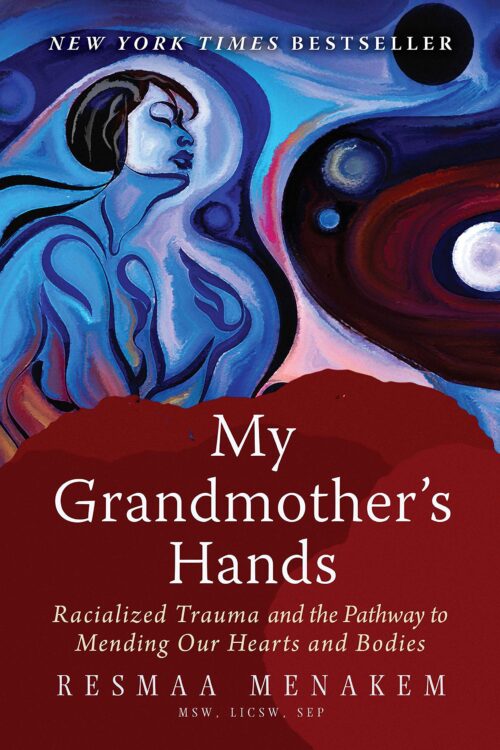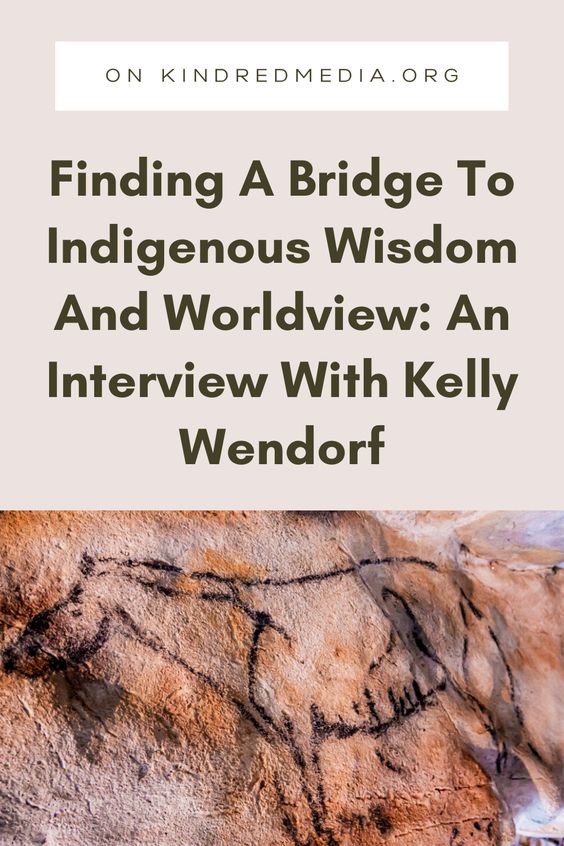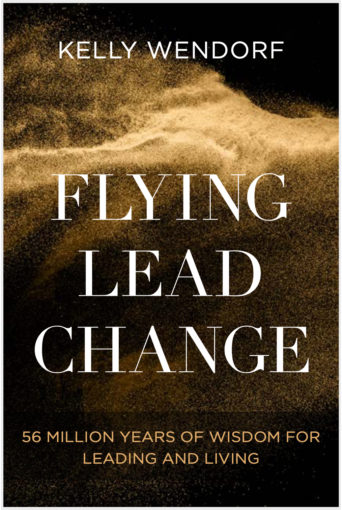Healing our Bodies, Healing the World
On the day of Derek Chauvin’s verdict, a book arrived at my door that shifted my understanding of violence. My Grandmother’s Hands by psychotherapist Resmaa Menakem bravely exposes the unpinning of racism through trauma. At first I thought the book would further grow my literacy around racism, and develop my allyship. After consuming it over a weekend, I emerged with something even more––insight into our collective ancient human history as victims and perpetrators of systemic brutality, aka our shared historic trauma.
“For the past three decades, we’ve earnestly tried to address white-body supremacy in America using dialogue, forums, discussions, education and mental training. But the widespread destruction of Black bodies continues,” writes Menakem. That’s because, he asserts, supremacy does not live in the cognitive faculties, it lives, breathes, inflicts, re-inflicts and perpetuates for generations through our bodies, as trauma.
Trauma is a universal experience for all humans. Even if you had a relatively healthy upbringing and life, the unresolved trauma from your ancestors still lives in your body, passed down through our DNA. We are not necessarily aware of the trauma embedded in our bodies because it does not live in our cognitive areas of the brain. Mostly we might experience it as various unpleasant sensations and pain.
Trauma lives in the bodies of individuals, communities, families, and countries. It lives in professional subgroups (healthcare workers, teachers, police officers). Unless actively healed, trauma spreads to others in the present through our bodies and embeds in our DNA, and thus continues on in the future.
Trauma occurs as a result of violence, abuse, neglect, loss, disaster, war and other emotionally harmful events. It can happen by having traumatic experiences, perpetratingtraumatic experiences, and witnessing traumatic experiences (called ‘vicarious trauma’). If you look at our history through this lens, you see how much violence has shaped our present moment, individually and collectively.
Such violence was imprinted in the bodies of our ancestors since the dawn of agriculture over 10,000 years ago when we started competing for resources. Back then, anyone who could be labeled as ‘other’ was a threat to our survival, whether it be a member of a neighboring tribe or clan, or someone within our community who was different (a birthmark, or other anomaly). Reflect back to the Middles Ages, a period that lasted from the 5th to the 15th centuries, where public torture and disembowelment was the entertainment du jour for men, women and children.
As white Americans of European descent, we come from a long tradition of violent out casting of other white people and later people of color. We dismembered and attempted to eliminate the Irish, Jewish, Polish, Native people and finally Black people. We’ve burned, mutilated, raped and killed women and children. Thus, the passing on of the trauma inheritance.
And we aren’t the only ones. A broad brushstroke over the globe and the ages reveals unspeakable atrocities across political, religious, gender and cultural lines. Even my Aboriginal Elder teacher, Uncle Bob Randall, told me stories of how his ancestors (the oldest civilization in the world at 60,000 years) used to trade ‘their’ women in order to avoid a war with a neighboring tribe. So, yeah, none of us are exempt.
This had me thinking: Given the last 60,000 years of war, famine, disease, genocide, and the like, if the whole of the modern human race is bathing in historic trauma-soup, then what are the consequences we are all facing today? I write a lot about ancient wisdom through nature-based and Indigenous knowledge, but it might be equally important to consider the ancient brutality that runs alongside it, and how it shapes our individual thoughts, feelings, and reactions every day.
The reason why so many of us experience difficulties in life is due to the centuries of unrelenting brutality our ancestors experienced. Generation after generation, our bodies stored trauma and intense survival energy, and passed these on to our children and grandchildren. What does historical trauma do to the average person living in the 21st century? Chronic anxiety, depression, racism, substance abuse, health issues, school shootings, workaholism, perfectionism, crime, sexism, misogyny, and domestic violence are a few of the consequences of unhealed trauma.
From here, looking all the way back across 60,000 years of violence is dizzying, and disorienting. Fast-forward to 2021, it culminates to a culture where white supremacy levies atrocities everywhere and most especially on Black bodies. Yet being trauma-informed invites us to apply a different and possibly more effective solution.Through the trauma lens we recognize we are all in trouble…a devastating thread that connects us all. And we can be connected through our healing too.
Love and resilience are also passed down, but they are not enough to heal the trauma, not entirely. They can diminish it somewhat; they can lessen its grip. Love and resilience also open the door to real healing. And real healing happens through our bodies, by deeply acquainting ourselves with our feelings and sensations and metabolizing them cleanly rather than numbing them or allowing them to drive us towards reactivity.
“Recent studies and discoveries increasingly point out that we heal primarily in and through the body, not just through the rational brain. We can all create more room, and more opportunities for growth, in our nervous systems. But we do this primarily through what our bodies experience and do—not through what we think or realize or cognitively figure out,” writes Menakem.
While trauma wields enormous impact, it’s healing is fairly straightforward. It starts by first acquainting yourself with your feelings and sensations. Slow down, notice and feel. Any dysregulated state can be the felt-ripple effect of trauma (present or inherited), so every feeling is worth attending to. Then metabolize them cleanly through breath or movement, rather than numbing them or allowing them to drive you towards reactivity (which can lead to ‘pushing trauma’ on to others). At EQUUS we call this process of metabolizing and regulating ‘Stop, Drop, and Deal’. It also helps to surround yourself in nature––a much larger living system that regulates your body towards a sense of safety and ease. Even hanging out with your dog or cat can help.
I believe that one of the reasons working with horses is so powerful is because of the way they assist our bodies to heal from trauma (present and ancestral) without the client ever having to know what is going on. While a bunch of valuable processes are happening cognitively with clients during The EQUUS Experience, a much more powerful process is happening through the nervous systems of the clients and the horses. To over-simplify here, the horses’ very large nervous systems are positively impacting and informing the smaller and more vulnerable nervous systems of the humans. Through limbic resonance and neural attunement the nervous system of the horses help to regulate and even rewire the trauma pathways inside humans. Horses also help clients to process sensations and feelings cleanly. I believe these influences over clients’ bodies are why so many of our clients report mysterious yet marked changes in their lives a full year and beyond after a mere two hours with the horses.
Most of these clients never utter the word trauma. They are coming to develop their leadership, hone their creativity, reconnect with their families, or gain clarity about their next step in life. Yet everyone is bringing their bodies, and with their bodies they bring their ancestral pain whether they are aware of it or not. I believe they depart from their session with the horses and time on our land healed in some profound way.
All of this suggests that one of the best things each of us can do to make a better world is to metabolize our pain and heal our trauma. And all around us is the natural world that is waiting to assist. When we heal we make more room for growth in our nervous systems and ultimately positively influence our DNA, which passes down to future generations.
How hopeful. How empowering. The key to a peaceful and sustainable world may be closer, simpler, more in our own hands and therefore more attainable than we think.




